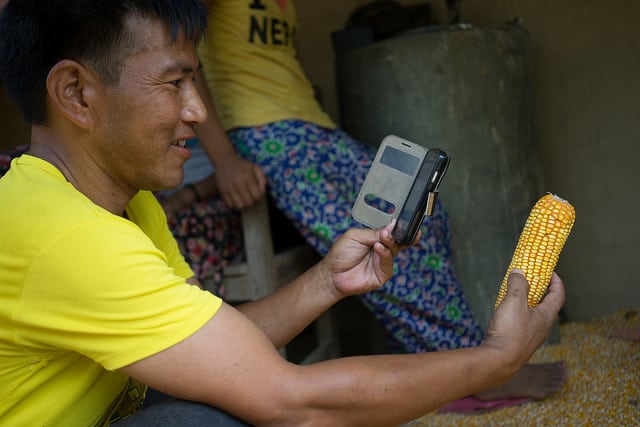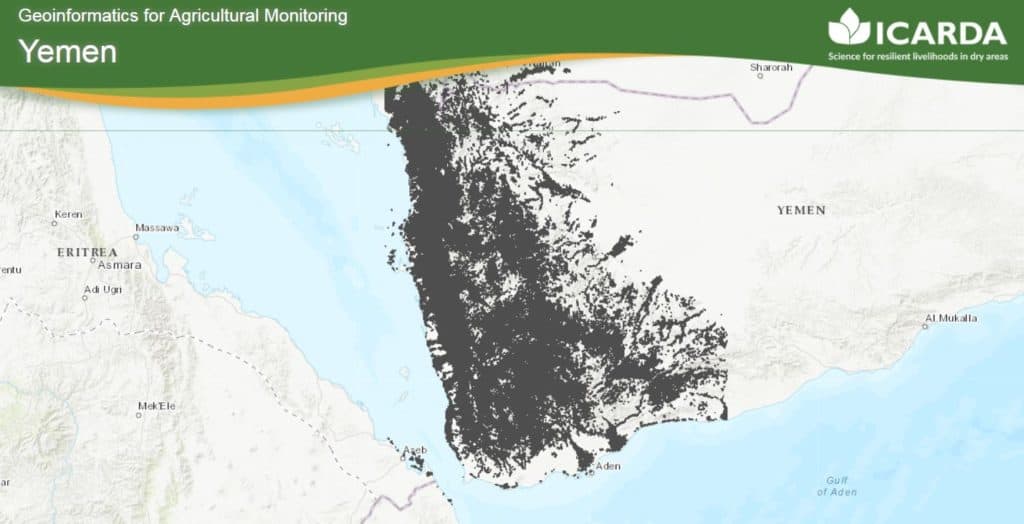Data-driven innovations taking agriculture to the digital frontier of science
At the intersection of agriculture and data science lies a host of exciting innovations that are pushing the boundaries to propel us towards a food-secure future.

To coincide with the theme of this year’s International Data Week: ‘Digital Frontiers of Global Science’ (5-9 November), we explore some of the innovations and initiatives at the cutting edge of the movement to enhance agricultural research for development through the use of big data.
From the Internet of Things to the internet of cows
You may have heard of the Internet of Things (IoTs), but have you heard of the Internet of Cows?
IoTs refers to the network of electronic items that are embedded with connectivity, sensors and software that allow them to connect, collect and exchange data. This broadens internet connectivity beyond typical devices like laptops and smartphones.
With the proliferation of small cheap devices, such as mobile phones and sensors, massive amounts of data can now be collected in the field on variables like soil health, rainfall and temperature. is being used to automate farming techniques and enabling ‘precision agriculture’ – that is tailored agronomic recommendations that can improve efficiency and effectiveness on-farm.
This innovation presents unlimited potential to tackle development issues across the agriculture sector. Enter, the Internet of Cows.
An app developed by Brazilian start-up BovControl crunches data on individual animals collected through ear tags or smart collars and uses artificial intelligence to make predictions and recommendations for cattle farmers. For example, the app can estimate the birth date for a pregnant cow, or the window of fertility for breeding which often occurs at night when farmers are not present.
Increasing the birth rate of cattle is a major challenge for farmers. In response to this, Fujitsu has released its own system called Connected Cow, which gathers data collected from a pedometer on the cow’s leg. Increased walking activity is an indicator that a cow is ready to breed. The app notifies the farmer when the animal reaches a certain activity level within a 24-hour period.
Enhanced connectivity and smart sensors are now being used throughout the agricultural sector to increase efficiency – reducing inputs and waste and increasing production, and not just for commercial agriculture but for small-scale farmers too.
Within CGIAR, there are exciting examples of this, including at the International Maize and Wheat Improvement Center (CIMMYT) in Mexico which is helping to create sustainable maize and wheat farming systems that produce more food with fewer resources.
Let there be light – and lazers
Harnessing the power of light for agricultural development sounds like, well, just the kind of futuristic thinking we need if we want to feed 9 billion people by 2050.
The CGIAR World Agroforestry Center is doing just that – analyzing soils and plant materials using only light.
“We no longer need expensive chemicals and complicated equipment, we can do everything with the simplicity of light,” explains Keith Shepherd, Principle Scientist, World Agroforestry Center.
Visible, near-infrared, x-ray and laser technology generates results that are reliable and cost-effective.
“This equipment allows us to take multiple observations of soils, plants and landscapes – georeferenced observations – enabling us to create digital soil maps of properties which we can provide for free to farmers and the private sector. For example, to fertilizer companies allowing them to make much more accurate recommendations,” adds Shepherd.
Due to the portability of the equipment, scientists can set up rural laboratories where smallholder farmers can bring in soil and plant samples and have them analyzed for a small fee.
This intelligence can enable smallholders to increase the productivity of their farms and, when applied on a broader scale, can support the sustainable intensification of agriculture while improving the management of natural resources.
As agriculture and data science converge, our ability to produce more food in a more sustainable way grows along with it. The technologies explored here are just a taste of the exciting new data-driven innovations within CGIAR and beyond that are forging new ways to reduce hunger and poverty and achieve the United Nations’ Sustainable Development Goals.
Monitoring agriculture in conflict states from space
Two-thirds of Yemenis depend on agriculture for their livelihoods and yet face extreme challenges due to the complex emergency which has developed into what is today described as the world’s worst humanitarian crisis. Famine fear is looming with WFP estimating 17.8 million people being food insecure. Hazard risk from frequent droughts to outbreaks of locusts is compounding the vulnerability of the hard-tried population of which 8.4 are now deemed severely food insecure relying entirely on external assistance. And the situation continues to deteriorate. Limited access to vast areas of Yemen makes innovative approaches to remote intervention essential to getting a better picture of the needs and trends This is where earth observation can play a vital role.
Researchers from the International Center for Agricultural Research in the Dry Areas (ICARDA) have developed a monitoring tool that uses high-resolution satellite imagery, captured every five to six days for each field in the country. The data is repurposed to produce digital maps, reports and statistics that detail agricultural production, that are both current and allow for comparisons across years.
In such fragile situations where scientists are physically unable to reach those zones to collect data to target interventions and productivity solutions, the power of satellite imagery, big data analytics and machine learning provides alternative access options – from the space, says Chandrashekhar Biradar, Head of Geoinformatics at the International Center for Agricultural Research in the Dry Areas (ICARDA).
“I think one of the big opportunities is that we can use data for more than what we originally gathered it for,” says Leroy Mwanzia, Chief Data Officer at the International Center for Tropical Agriculture (CIAT), of the value of machine learning technologies such as this.
The tool compiles and computes spatial information about the three most important components of agriculture: cropland area, fallow lands and crop yield. This information is vital for decision-makers to develop and prioritize interventions to support Yemeni farmers and their families.
And the best part? The technology can be extended to other fields of application or other spatial planning contexts, including war damage mapping, pest monitoring, yield forecasting and producing early warnings for drought.
Data quality at the source
The often-overlooked foundation of all digital innovations is quality data.
“FAIR data is the link between science and impact,” explained Brian King, Coordinator of the CGIAR Platform for Big Data in Agriculture, during a recent live video for International Data Week.
“Without FAIR data the ecosystem won’t grow sufficiently to support these cutting edge innovations. Without it we won’t have the ability to accelerate our research and reproduce scientific research and connect it to the people who need it the most.”
There is more data being produced than ever before, and in the agricultural sector this ranges from qualitative household surveys, to high-resolution satellite imagery and genomic data. Ensuring that this data is FAIR (Findable, Accessible, Interoperable and Reusable) is a critical first step towards realizing its potential.
“One of the things that we’ve been working on… is a pan-CGIAR open data discovery tool that we developed that for the first time that enables keyword search of open data sets across all 15 CGIAR Research Centers. And progressively we want this to be a research source to our research partners and others,” he adds.
Called GARDIAN, or the Global Agriculture Research Data Innovation and Acceleration Network, the platform uses machine-readable structured data from all CGIAR Research Center, Program and Platform repositories, collects it, and displays the outputs in a central repository that contains over 93,000 publications and 2,100 datasets.
With FAIR data, the possibilities are endless.
Marianne McDade
Communications Coordinator for the CGIAR Platform for Big Data in Agriculture
Cali, Colombia





